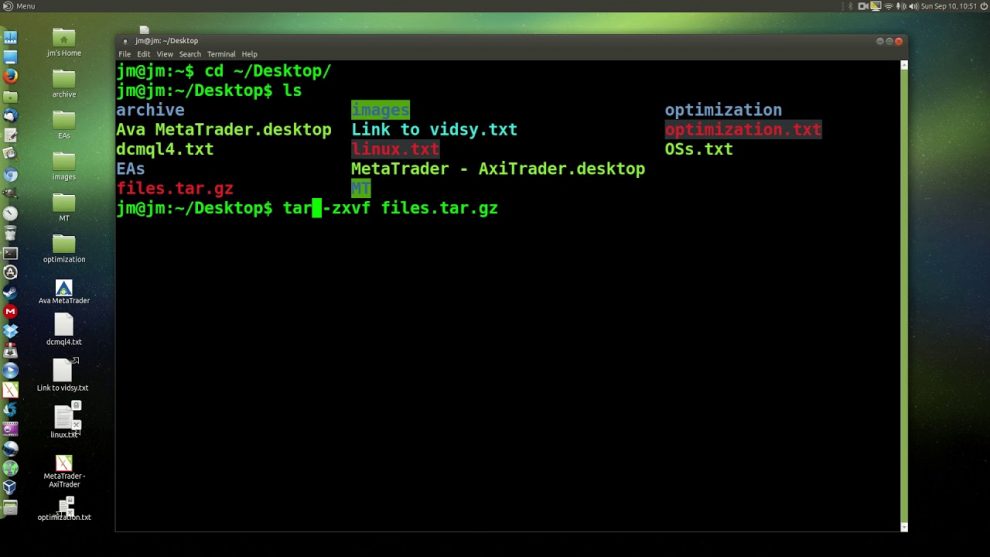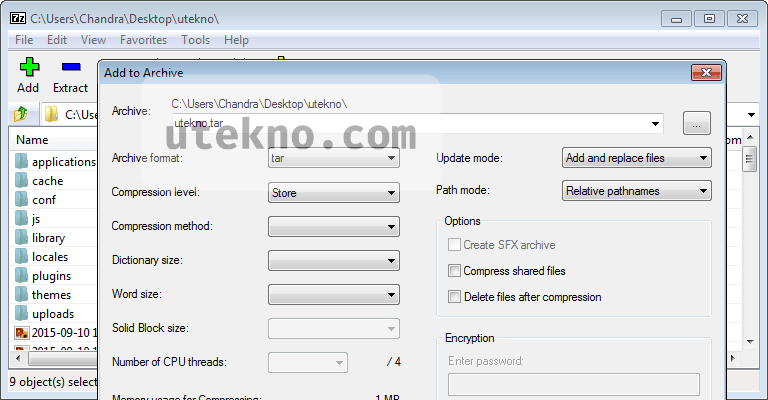

- Untar a tar gz file install#
- Untar a tar gz file zip file#
- Untar a tar gz file full#
- Untar a tar gz file rar#
- Untar a tar gz file windows 10#
tar xvfz To use bunzip2 to extract your tar.bz2 file in a single step, use the j switch instead.
Untar a tar gz file install#
Pipe viewer can be installed in CentOS or RHEL using the following command yum install pv To gunzip and untar a file in a single step, use the followingnote that the z switch is the important one that tells tar to unzip it. It can be inserted into any normal pipeline between two processes to give a visual indication of how quickly data is passing through, how long it has taken, how near to completion it is, and an estimate of how long it will be until completion. On the panel on the right side of the screen, click ' Unzip to: ' and choose the location you would like to save your file to, for instance the desktop or an external hard drive. This will open up WinZip and display the file. PV (“Pipe Viewer”) is a tool for monitoring the progress of data through a pipeline. Use R to create a tarball (tar.gz zip file) or to unzip a tarball. Find the tar gz file you would like to open on your computer and double-click on the file. (Also, on many systems, when you download the tar. Heres an example: tar -xzf The result will be a new directory containing the files. If you want to see the progress of the extraction process, you need to use Pipe Viewer ( pv). To unpack a tar.gz file, you can use the tar command from the shell. The command to extract a tar.gz file using pigz is given below. Ensure epel repository is enabled in your system yum install pigz The command to install pigz in CentOS or RHEL is given below. OPTIONAL: Click blue 'Preview' button to open directly in the browser. Click the green 'Save' button on the individual files to save to your local drive. But overall performance is far better than the normal gzip. Click 'Select tar file to open' to open the file chooser Drag and drop the tar file directly onto ezyZip It will start the file extraction and list the contents of the tar file once complete.
Untar a tar gz file rar#
For more detail see Linux: Compression How-to: tar gzip bzip2 xz 7zip rar zip.
Untar a tar gz file windows 10#
Windows 10 has BSD tar builtin, at C:Windowssystem32tar.exe create tar file tar cvf dirname.tar dirname. For a project (that can be found here on Github), I wanted to download a compressed file from an url address and.

Now we will extract the contents of documents.tgz file to separate /tmp/tgz/ directory.
Untar a tar gz file zip file#
The extraction happens in a single thread. Note: the max zip file Compress-Archive can create is 2 GB. import tarfile fname '' if fname.endswith('tar.gz'): tar tarfile.open(fname, 'r:gz') tar.extractall() tar.close() elif fname.endswith('tar'): tar tarfile.open(fname, 'r:') tar.extractall() tar.close() A case study. First make sure that you create the specific directory that you want to extract into by using: mkdir -p /tmp/tgz.

It uses multiple threads for reading, writing and checksum calculations. tar files after decompressing 1544 Open gvilar opened this issue on tar.gz are equivalent and both signify that a tar file. To extract the file to a specific directory, run. Now to extract the file to the current directory, run the command. I searched a lot and finally figured out a solution. From the terminal, change to the directory where tar file is located. I want to speed up the extraction as the normal extraction was taking approximately a day. Up to you which you find easier or most useful.Recently I got a tar.gz file of around 30 GB and on extraction it will become approximately 4TB. Option 2 $ tar -xzf -wildcards -no-anchored '*contract*' Then you extract what you want using: $ tar -xzf This will list the details of all files whose names contain your known part.
Untar a tar gz file full#
You have two options:Įither use tar and grep to list the contents of your tarball so you can find out the full path and name of any files that match the part you know, and then use tar to extract that one file now you know its exact details, or you can use two little known switches to just extract all files that match what little you do know of your file name-you don't need to know the full name or any part of its path for this option. Let's assume you have a tarball called and you just know there is one file in there you want but all you can remember is that its name contains the word contract.


 0 kommentar(er)
0 kommentar(er)
